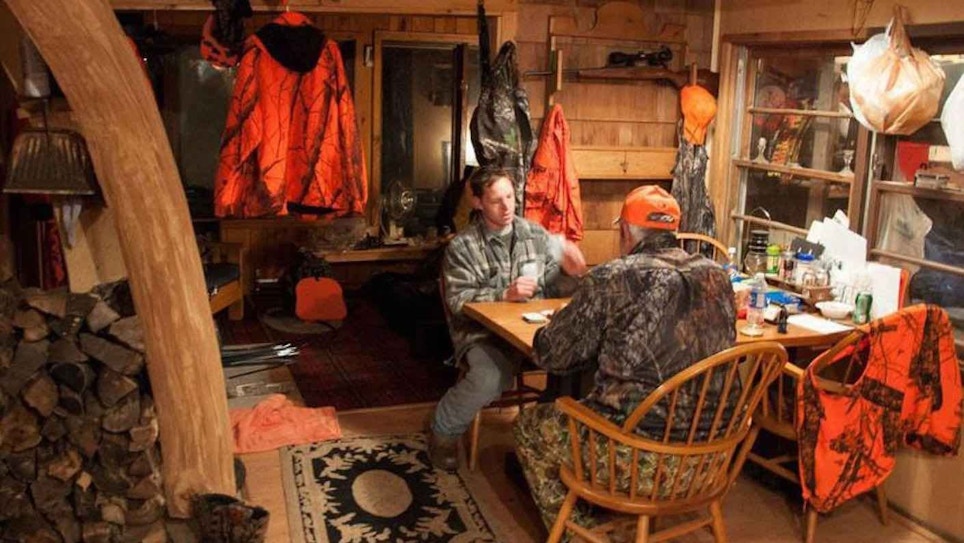Deer camp is a special place, and nothing I can write here could possibly explain it if you haven’t been a part of one. But I’ll still try.
For me, deer camp started in northern Minnesota in a 20x30-foot one-room shack jammed from wall to wall with bunk beds, a tiny kitchen table and a wood-burning cook stove. After most days, wet clothes were hung close to the ceiling to dry by morning. When supper/storytelling was finished and dishes were washed and put away, friends and family members scattered. Some cleaned their rifle; others sat down with a cup of coffee, hot chocolate or cold beer and grabbed a well-worn deer hunting magazine to kill time before bed; still others dusted off the deer camp cribbage board and started talking smack.
Most deer camps aren’t fancy. Our version had electricity but no running water. Can you say “outhouse?” I dreaded walking through the snow at o’dark-30 to our outhouse before getting dressed for the day’s deer hunt. It was common in early to mid November for air temps to remain in the single digits. Frozen toilet seat = no fun!
Although no two deer camps are identical, one common thread shared across them all is spirited debate. Pick your topic — Ford vs. Chevy, Winchester vs. Remington, .30-30 vs. .30-06 (my strongest deer camp memories predate the 6.5 Creedmoor), hunters have strong opinions and aren’t afraid to share them.
One topic that often comes up in camp is shot placement. Firearm hunters debate whether it’s better to “break down a deer” with a bullet to the shoulder vs. aiming a few inches further back to take out the lungs only. My dad and Uncle Walt got after each other on this topic more times than I can count on all my fingers. Dad liked to drop whitetails in their tracks; he always aimed for the shoulder. His brother Walt said it ruined a perfectly good shoulder roast.
Walt and my dad are still living but now too old to visit deer camp during cold and snowy Minnesota Novembers. As I think about them, and remember their debates about deer anatomy, I wish I could go back in time and bring the following two gifts to our deer camp.
NBEF Mini 3-D Deer
According to the National Bowhunter Education Foundation, the Mini 3-D Deer is back by popular demand. This realistic deer model is molded from high-quality, durable foam and made exclusively for the NBEF by Rinehart Targets. The reverse side of the animal is cut away showing vital organs and major bones. This is a very effective tool to demonstrate the shot placement with the included stick pin. Model dimensions: 11 inches long, 10 inches high. Click here to order one for your deer camp; regular price is $75; it’s on sale now for $65.
I’ve owned the NBEF Mini 3-D Deer for nearly 30 years, and today it stays at my dad’s house. He’s teaching his two youngest grandsons, ages 12 and 14, proper shot placement on whitetails, with bows and rifles. Yes, Dad is still a proponent of “take out the shoulder” with a tough bullet, but I’ve seen him instruct his grandsons on how to avoid this thick bone when using archery gear. Dad’s house in the Wisconsin woods now serves as deer camp for most of us, and the Mini 3-D Deer is often at the center of after-dark discussions, especially when one of us has fired a bullet or arrow and we have yet to take up the blood trail.
Ryan Kirby Paper Print: “The Anatomy & Physiology of the White-tailed Buck”
As I said, most deer camps aren’t fancy, but even so, any space occupied by hunters would be ideal for this amazing paper print ($99, unframed, 20x30 inches). It’s a blend of classic wildlife art and biology; I’ve never seen anything like it before. I can just imagine my dad and Uncle Walt pointing to the 20-plus sketches and pleading their case on where to aim.
Kirby’s whitetail anatomy sketches and the accompanying commentary have been reviewed and approved by the National Deer Association. This print also includes detailed tips for shot placement, blood trailing and recovery. Not only will it be a unique conversation piece, but deer camp members can use it as a resource to aid in the recovery of whitetails, as well as a tool for teaching new hunters where to aim when faced with different shot angles. Each print is individually signed and stamped with Ryan’s Seal of Authenticity. Click here to check out “The Anatomy & Physiology of the White-tailed Buck.”
In the short YouTube video below, Kirby blends his art with video of whitetails to talk about several shooting scenarios you might encounter during deer season. I found it interesting and think you will, too.








